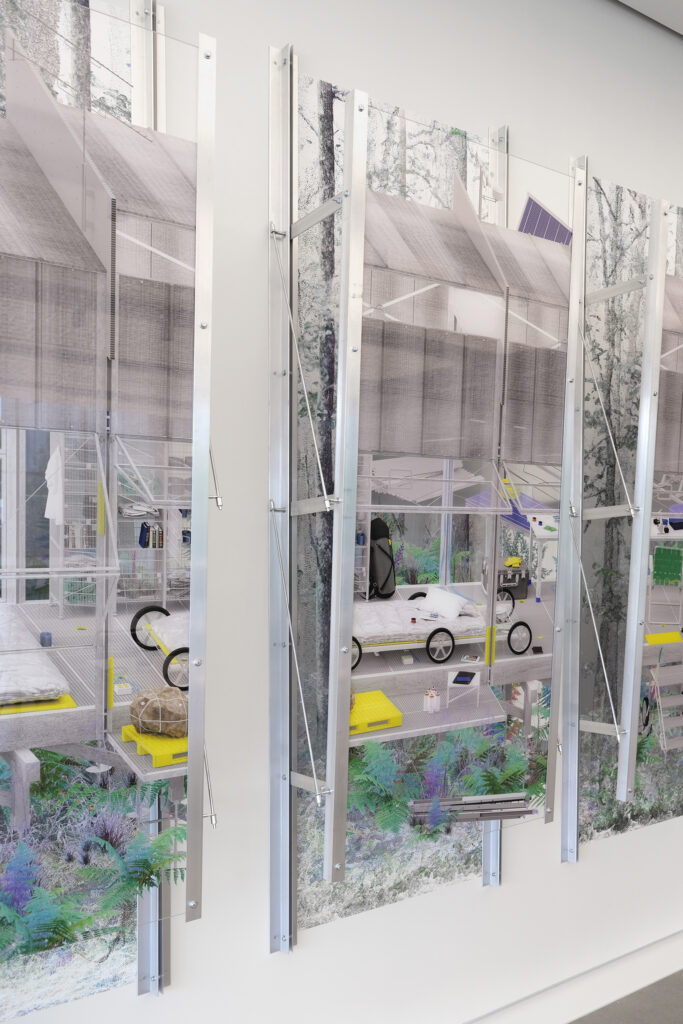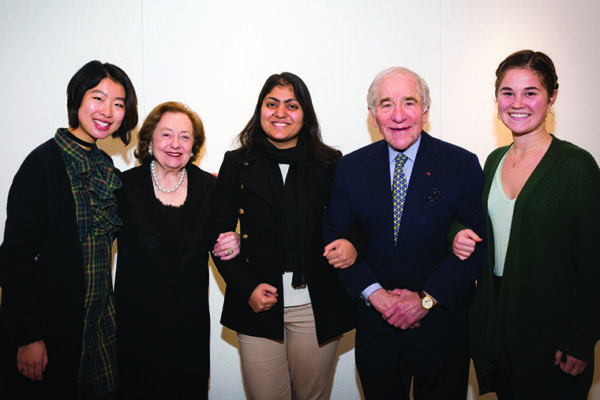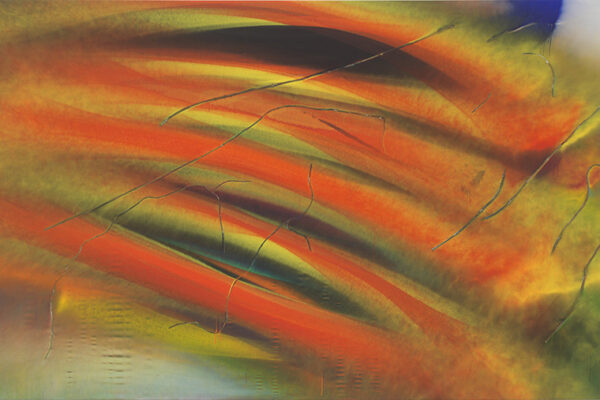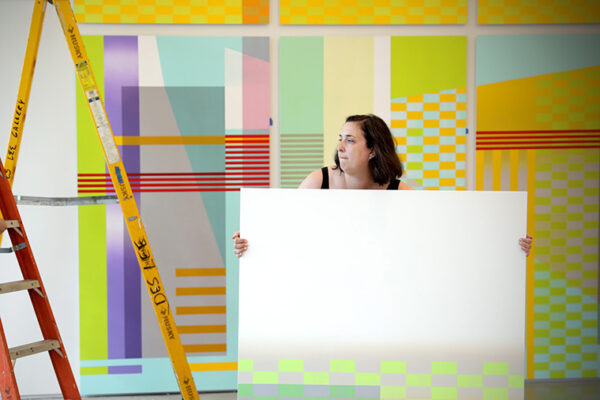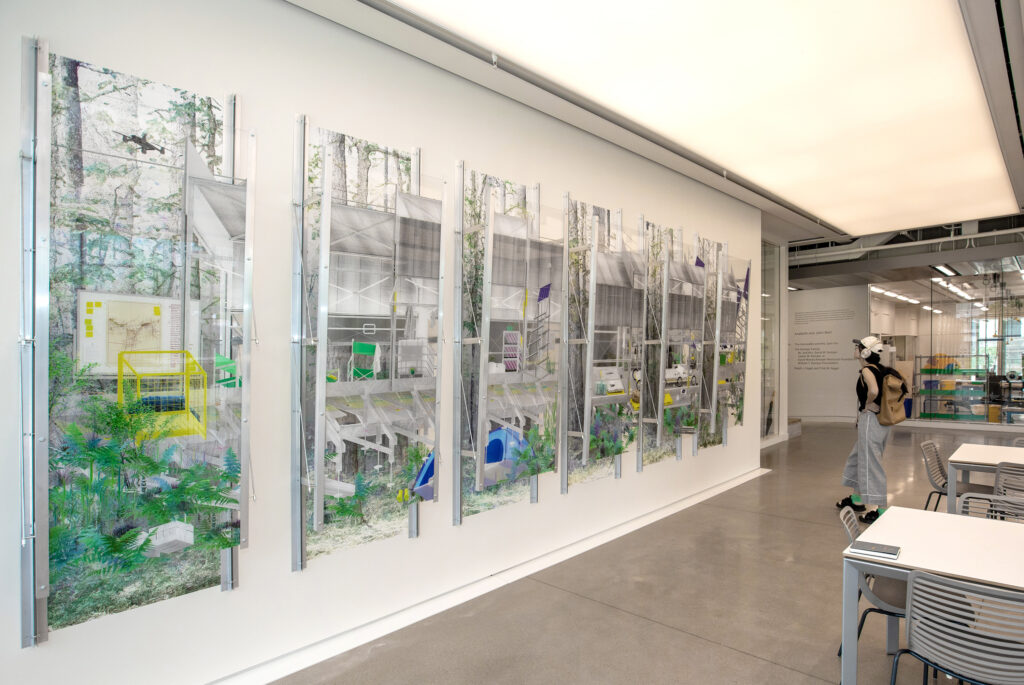
Plant life erupts through grated flooring. Circuit boards and coffee cups sprawl across a laminate table. A narrow mattress floats incongruously on high, wide-spoked wheels.
In “FIELD-STATION,” Houston-based architectural practice HOME-OFFICE explores the confluence of forestry, activism and place-based research. The six-panel mural, commissioned by the Sam Fox School of Design & Visual Arts at Washington University in St. Louis, both depicts and embodies a democratic vision of collaborative technology and participatory ecological study.
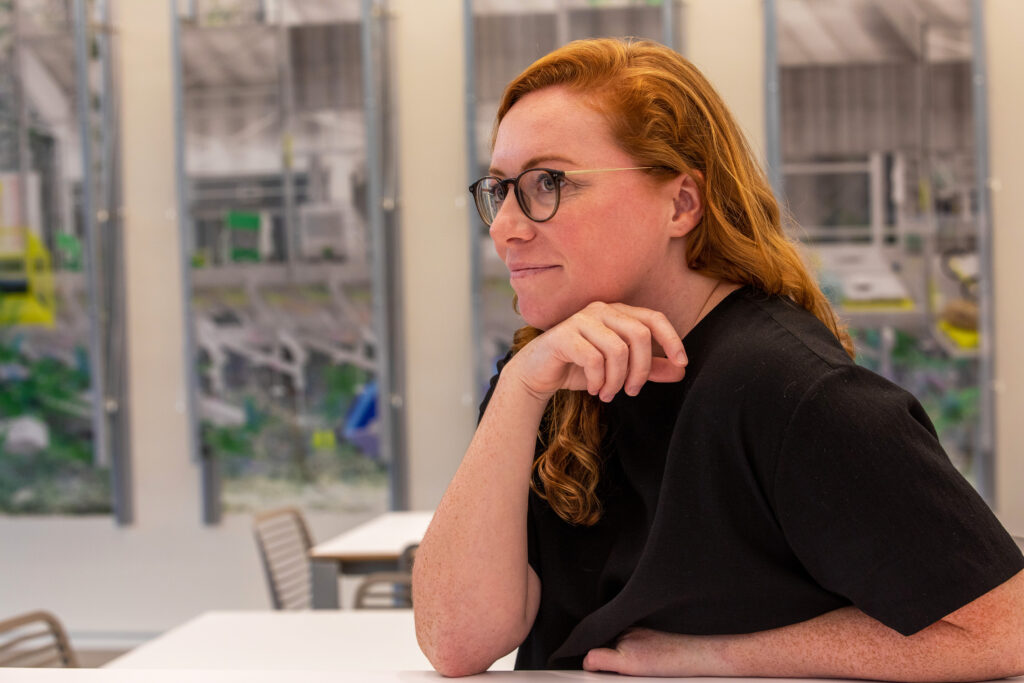
“‘FIELD-STATION’ experiments with architectures of environmental sensing, observation and measurement,” said HOME-OFFICE co-founder Brittany Utting. “The project asks: How do these spatial practices relate to climate change, and how can we rethink our own relationships to ecology and landscape?”
Installed in the first-floor commons of Anabeth and John Weil Hall, “FIELD-STATION” was inspired by the growth of crowd-sourced “citizen-science” projects, in which members of the public are recruited to help gather and/or analyze data.
Utting and HOME-OFFICE co-founder Daniel Jacobs wanted to design a compact, light-but-sturdy live/work/laboratory space that could support a range of citizen-science activities, from checking air quality and monitoring pollution levels to assessing habitat health, gathering evidence of ecological disturbance and relaying information about resource usage.
The result, which was installed over the summer and will occupy the Weil Project Wall throughout the 2022-23 academic year, is equal parts building plan, character study and utopian speculation.
“We’re very interested in the pragmatics of construction,” said Jacobs, who earned a bachelor of science degree in architecture from the Sam Fox School in 2010. He points out that each of the six panels is constructed using the same simple materials and methods that are specified within the drawing itself. “The apparatus that holds the panels becomes a proxy for the structure.”
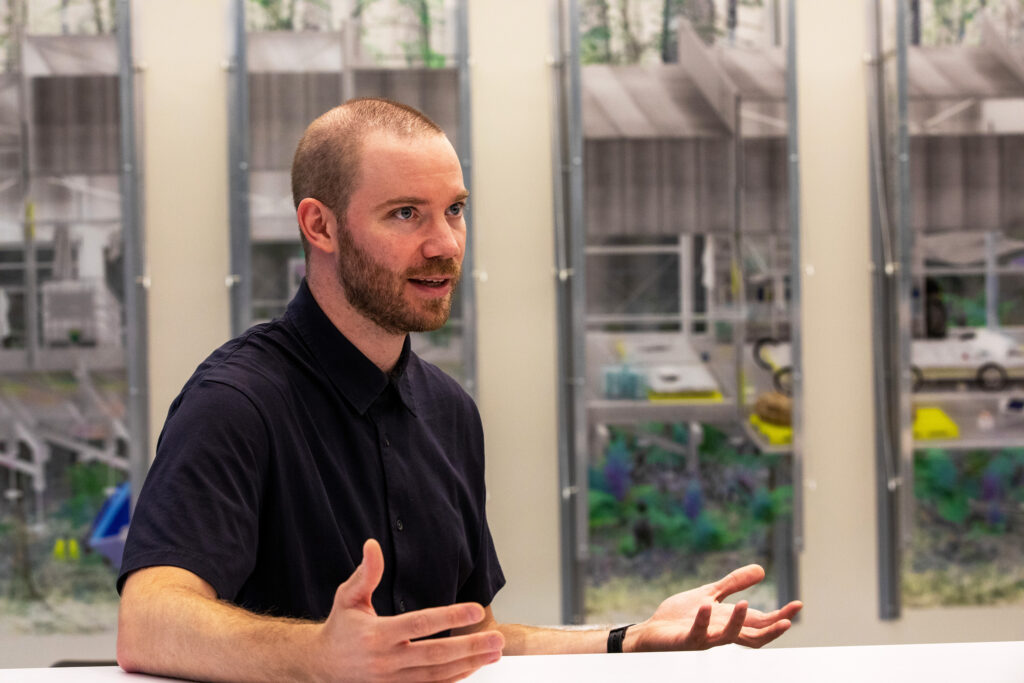
At the same time, the mural’s imagery explores the potential life of the station through a series of almost novelistic details. In one vignette, a group of beach chairs are gathered around a white board displaying a portion of Ecuador’s 2008 constitution, which granted nature legally enforceable rights. In another, wire storage cages are packed with towels and books by environmental technologist Jennifer Gabrys.
“So much of architecture is mystifying and inaccessible,” Utting explained. “But what if we could reframe architecture to become something more convivial, something that you can build yourself, by hand? An architecture that enables a multiplicity of ways of being within a landscape?”
With its flexible, low-cost design, “FIELD-STATION” could easily be adapted to a variety of conditions, from remote wilderness to managed forest to familiar — if sometimes overlooked — zones of suburban and ex-urban sprawl.
“I think those sorts of peripheral edge spaces do merit environmental study,” Jacobs observed. While combating the larger forces of global warming and deforestation remains imperative, “people are also interested in examining the landscapes right outside their doors.”
Utting concludes: “Imagine if every neighborhood had a local field station.”
Jacobs and Utting will discuss their practice at 6 p.m. Thursday, Sept. 8, as part of the Sam Fox School’s fall Public Lecture Series. The talk is free and open to the public and takes place in Steinberg Auditorium. For more information, visit samfoxschool.wustl.edu.
